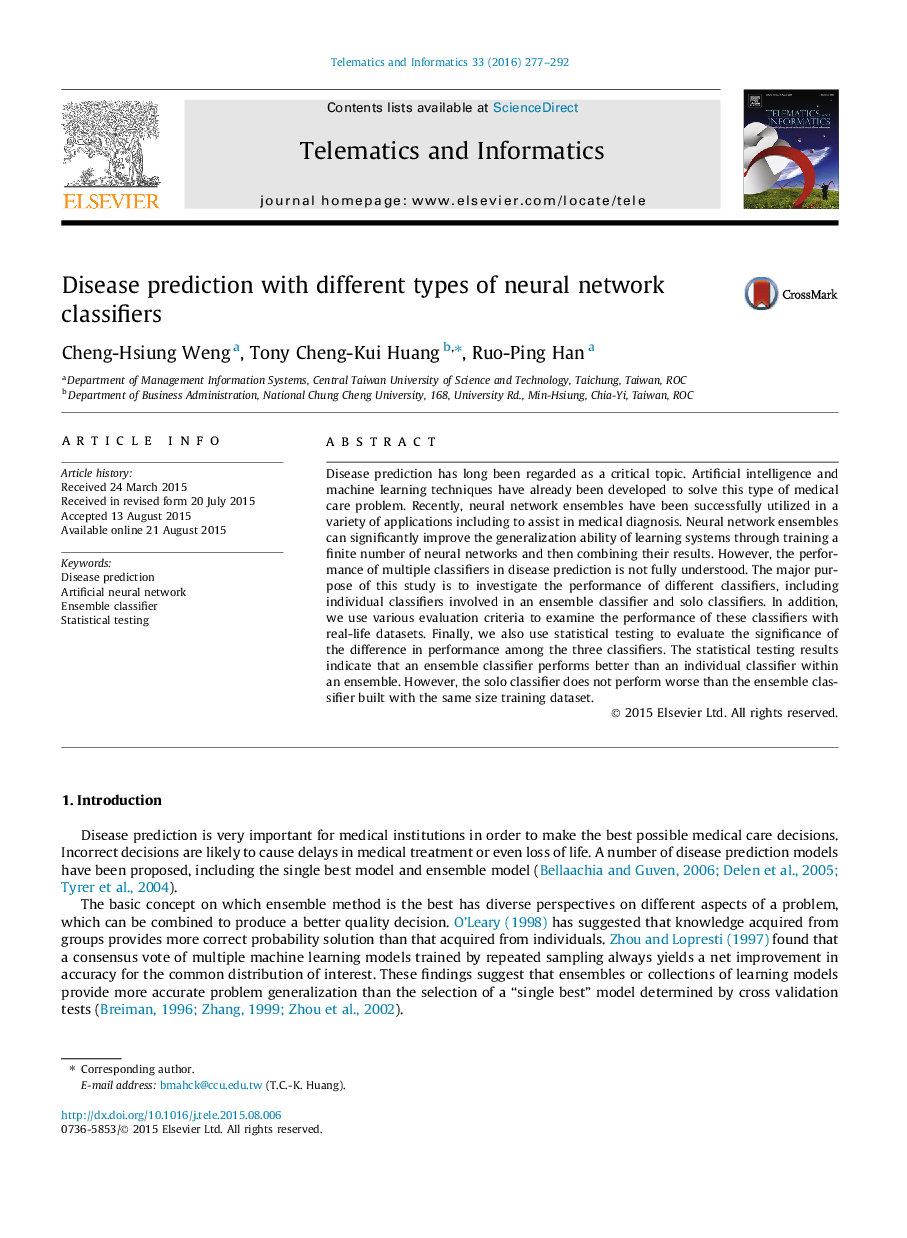| Article ID | Journal | Published Year | Pages | File Type |
|---|---|---|---|---|
| 466010 | Telematics and Informatics | 2016 | 16 Pages |
•Disease prediction has long been regarded as a critical topic.•Different types of neural network classifiers are used for disease prediction.•Various evaluation criteria were used to study their performances with real-life datasets.•Statistical testing was used to evaluate the significance of the difference in performance.
Disease prediction has long been regarded as a critical topic. Artificial intelligence and machine learning techniques have already been developed to solve this type of medical care problem. Recently, neural network ensembles have been successfully utilized in a variety of applications including to assist in medical diagnosis. Neural network ensembles can significantly improve the generalization ability of learning systems through training a finite number of neural networks and then combining their results. However, the performance of multiple classifiers in disease prediction is not fully understood. The major purpose of this study is to investigate the performance of different classifiers, including individual classifiers involved in an ensemble classifier and solo classifiers. In addition, we use various evaluation criteria to examine the performance of these classifiers with real-life datasets. Finally, we also use statistical testing to evaluate the significance of the difference in performance among the three classifiers. The statistical testing results indicate that an ensemble classifier performs better than an individual classifier within an ensemble. However, the solo classifier does not perform worse than the ensemble classifier built with the same size training dataset.
